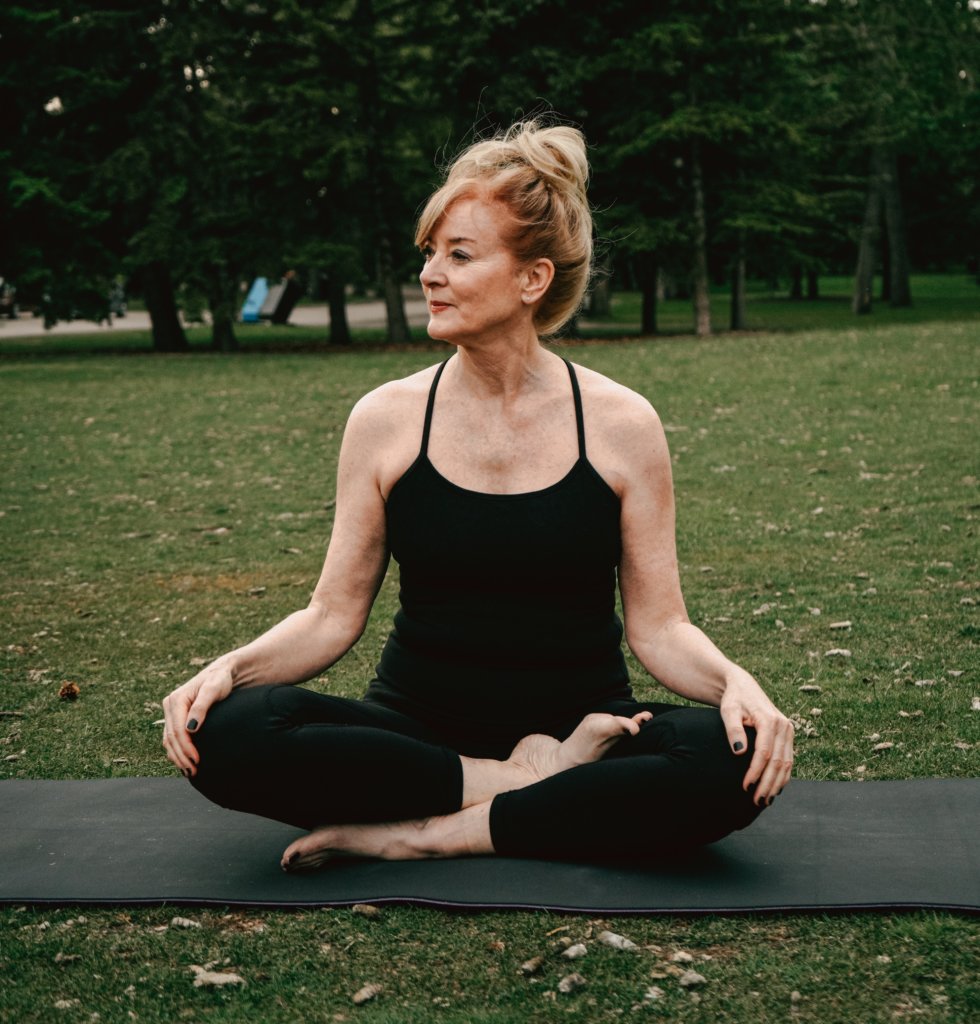Create a Meditation Bath Environment to Boost Emotional Stability

Amid the chaos of modern life, finding moments to nurture our emotional well-being is essential. One innovative approach that has gained attention is Shower Meditation, transforming daily routines into sacred moments for reflection and calm. By using the simple act of bathing, individuals can unlock a pathway to emotional stability and clarity.
Creating a meditation environment in your bath doesn’t require elaborate setups or extensive time commitments. Instead, it hinges on intentionality and the right elements to foster tranquility, such as:
- Ambient Lighting: Choosing gentle, warm lights can enhance relaxation.
- Soothing Scents: Incorporating essential oils or bath products can elevate your experience.
- Soundscapes: Soft music or nature sounds enrich the meditative atmosphere.
In this article, we will explore the Top 5 tips for creating a meditation bath environment designed to promote emotional stability. Prepare to dive into the serene world of shower meditation, where your daily cleansing ritual transforms into a powerful practice for mental wellness.
SEE ALSO: Click here to read another article
Top 5 Tips for Creating a Meditative Shower Environment to Promote Emotional Stability
In our hyper-connected, always-on world, it can often feel like our well-being is perpetually under siege. Amidst the cacophony of demands and distractions, many seek solace in meditation, a practice that fosters mindfulness and emotional stability. Surprisingly, one often overlooked sanctuary of tranquility is the shower. With intention, a simple shower can transform into a powerful meditative practice. Here, we present our top five tips for creating an optimal shower environment that promises an enriching meditative experience. Join us as we explore how to enhance your daily routine and unveil a peaceful retreat.

5. Choose the Right Time
The timing of your shower meditation is crucial. Selecting a time when interruptions are minimal will foster a tranquil atmosphere necessary for meditation. Whether heralding the dawn of a new day or unwinding after the sun has set, finding your perfect time is key.
Evaluate Your Routine
Understanding your daily rhythm is essential. Pinpoint the moments when you are most at ease; these quiet times are perfect for shower meditation. Consider when you naturally feel reflective or open to relaxation, perhaps after morning exercise or before bedtime.
Synchronize Your Shower
Your time in the shower should ideally align with periods when you can truly disconnect from other responsibilities. This means being in a mindset to let go, which is why late nights or early mornings can be particularly effective.
Allow for a Longer Experience
Whenever possible, allocate enough time for a more extended, unhurried shower. The extra time allows you to immerse yourself fully in the meditative process, turning a routine activity into a meaningful ritual.
4. Set a Comfortable Temperature
The temperature of your shower can significantly influence your meditative experience. The right temperature can help relax your muscles and elevate your mental state. It’s about striking a harmonious balance that soothes your body and mind rather than overstimulating them.
Warm vs. Cool
Warm water is renowned for its ability to ease tension and promote relaxation. On the other hand, a cooler shower might invigorate your senses and sharpen your focus. Equally valid, each has its benefits depending on the objective of your meditation session.
Mindful Adjustments
Don’t hesitate to adjust your shower’s temperature subtly during your session. Staying comfortable is paramount, as shifting temperature slightly can further enhance the meditative experience by aligning with your body’s instinctive needs.
3. Incorporate Calming Scents
Our sense of smell is deeply intertwined with emotion. Introducing soothing fragrances can elevate your meditation practice. Essential oils or scented soaps can transform your shower into an olfactory oasis.
Lavender for Calm
Lavender is celebrated for its soothing properties, known to reduce anxiety and instill a sense of peace. This makes it an ideal companion for evening showers aimed at unwinding from a busy day.
Chamomile and Geranium
Chamomile offers tranquility with its soft, pleasant aroma, quieting a busy mind. Meanwhile, Geranium provides emotional balance, infusing the space with a sense of well-being and positivity. The holistic effects of these scents can make a marked difference in your emotional health.
2. Engage the Senses
Mindfulness meditation thrives on sensory involvement. Your shower affords a rich tapestry of sensory experiences, from the sound of the water to the warmth enveloping your skin—all of which contribute to a grounded, present-focused mind.
Audible Enhancements
Consider complementing the meditative cascade with soft music or nature sounds. These audible elements can deepen your focus and relax the mind, guiding you gently into a meditative state.
Focus on Sensation and Breath
Heighten your awareness of the water’s tactile sensation as it cascades over you. Simultaneously, pay close attention to your breath, allowing each inhalation and exhalation to become deeper and steadier, reinforcing calmness.
1. Create a Distraction-Free Zone
To achieve true meditative immersion, creating a sanctuary free from interruptions is critical. This means establishing your shower as an undisturbed zone, a refuge where you can conduct a thorough mental reset.
Unplug and Insulate
Ensure you are free from the constant ping of electronic devices by turning off your phone. A “do not disturb” sign can be a simple yet effective communication to others, honoring your need for solitary reflection.
Pre-Shower Preparation
Before stepping into the shower, engage in a few moments of deep breathing. This pre-shower ritual signals a transition into mindfulness, readying you for profound awareness and connection within your meditative practice.
By embracing these five carefully considered techniques, your shower can become a meditative ritual that profoundly impacts emotional stability. From the mindful selection of time to the creation of an undisturbed space, each step contributes to a holistic approach of shower-based meditation, offering a personal retreat that nourishes both mind and spirit.
Creating a meditation environment while bathing is an exploration of both sensory engagement and emotional stability. This practice is not merely about the physical space but involves a holistic approach that integrates sound, scent, temperature, and mindfulness. In this context, the nuances of each element play a pivotal role in enhancing the meditative experience. To elaborate on the merits of this practice, let us delve deeper into specific advantages categorized into distinct yet interconnected areas.
| Category | Key Features |
|---|---|
| Soundscapes | Incorporating soft music or nature sounds like rain or ocean waves can create a soothing atmosphere that enhances relaxation and meditation. |
| Aromatherapy | Using essential oils such as lavender or eucalyptus can positively influence moods, providing a calming effect that aids emotional stability. |
| Mindfulness Practices | Engaging in mindfulness techniques during your bath allows you to focus on the present moment, which can significantly improve self-awareness and emotional control. |
| Temperature Control | Adjusting water temperature to your preference can enhance physical comfort, leading to an overall improved sensation of well-being during meditation. |
The interplay of these elements not only contributes to a more enriching experience but also encourages a deeper connection with oneself. For example, the carefully curated soundscapes can help drown out distracting noises, creating a personal sanctuary where the mind can wander freely. Integrating aromatherapy enhances this retreat by enveloping the senses in calming scents, fostering an environment that promotes peace and tranquility.Incorporating mindfulness practices into this ritual encourages a moment of reflection, allowing individuals to set intentions or simply bask in the serenity of their surroundings. As one savors the sensation of warm water and soothing aromas, the connection to emotional states becomes more apparent, prompting an introspection that often eludes us in our busy daily lives. By consciously leveraging these diverse elements, we can cultivate a powerful toolbox for emotional resilience and stability. Exploring how these practices contribute to one’s emotional landscape invites a broader conversation on mental health and self-care, encouraging individuals to establish their unique rituals for emotional rejuvenation.
LEARN MORE: This related article may interest you
Frequently Asked Questions on Creating a Meditation Environment in the Bath
How can creating a meditation environment during bath time enhance emotional stability?
Transforming your bath into a meditative space can significantly enhance emotional stability by providing a moment of respite from daily stressors. The warm water and tranquil setting facilitate relaxation and mindfulness, allowing your mind to disconnect from external pressures and focus on the present moment. This practice can help in reducing anxiety and improving mood through the release of tension and encouraging mental clarity.
What elements are essential for a meditative bathing experience?
To cultivate a meditative bathing environment, some key elements are pivotal. Start by adjusting the lighting to a soft, gentle level using candles or dimmed lights. Incorporate soothing sounds, like calming music or nature sounds, to promote relaxation. Additionally, consider using essential oils or bath salts with calming properties, such as lavender or chamomile, to enhance the sensory experience. Remember, the overall goal is to create an environment that allows you to unwind and focus inwardly.
Is it necessary to follow a specific meditation technique while in the bath?
It’s not imperative to adhere to a specific meditation technique while in the bath. Instead, focus on what feels natural and comfortable for you. Some might prefer guided meditations available via apps or audio recordings, while others might choose to practice deep breathing or mindfulness techniques. The essence is to maintain a focus on your inner self and sensations, rather than rigid protocols.
How often should one practice meditation during the bath for optimal results?
There is no fixed frequency for engaging in meditative baths, as it largely depends on individual preferences and lifestyles. For some, incorporating this practice once or twice a week provides substantial benefits, while others might choose to indulge more frequently. The crucial aspect is consistency and ensuring the practice remains enjoyable and not another chore.
What precautions should be taken when meditating in the bath?
While meditating in the bath, bear in mind some essential precautions to ensure safety and comfort. Avoid baths that are too hot, as they may lead to dizziness or overheating. Stay attentive to the time spent soaking to prevent skin dryness. Also, be cautious with candles and essential oils to avoid potential hazards. Always listen to your body and adjust the environment to suit your comfort level, ensuring a safe and pleasant experience.
YOU MAY ALSO LIKE: Read this other article
Conclusion
In a fast-paced world where emotional stability often feels like an unattainable goal, the practice of Shower Meditation emerges as a transformative approach. By understanding how to create an ideal environment for meditation during the shower, individuals can harness moments of tranquility in their daily routines. The article outlined significant steps to enhance this practice, starting from the strategic use of lighting to the incorporation of aromatic elements. Each step serves a crucial role in building a meditative sanctuary right in one’s bathroom.
To recap, adopting gentle lighting sets the scene for relaxation, helping the mind transition into a meditative state. The use of soothing aromas, such as essential oils, can further elevate this experience, engaging the senses and promoting emotional balance. Incorporating calming sounds, whether through nature-inspired playlists or the natural rhythm of water, acts as a powerful tool to ground thoughts and emotions. Finally, the practice of focusing on mindful breathing and setting a clear intention for each session ensures that shower meditations are not only effective but also deeply personal.
The incorporation of these elements not only enriches the shower meditation experience but can also unravel new pathways to emotional stability. As individuals seek ways to integrate mindfulness into their everyday lives, the shower offers a unique opportunity to blend physical cleansing with a mental detox. Ultimately, exploring and investing in this multidimensional practice invites readers to investigate further and might reveal untapped reserves of peace and resilience within themselves.


